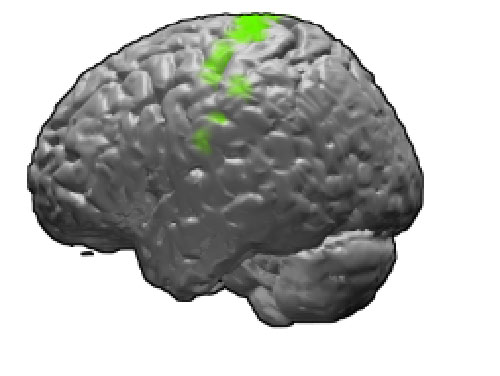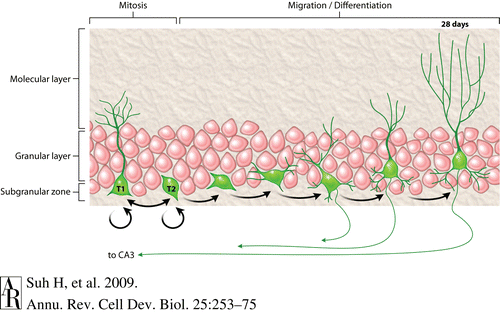PSYC 2: Biological Foundations - Fall
2012 - Professor Claffey
Unit: Organization
Versions:
10/31/12 - Updated readings, terms and questions
10/26/12 - Updated readings
10/03/12 - Original version
Readings
Chapter 3: Anatomy of the nervous system
All sections except:
3.2 Cells of the Nervous
System - we've already covered this
3.3 Neuro Techniques - do not
have to read this
Chapter 8: Sensorimotor system
We are only spending one class on this
You may want to initially skim but wait until
after lecture to decide what to read in depth
Chapter 9: Development of the nervous system
We are only spending one class on this
You may want to initially skim but wait until
after lecture to decide what to read in depth
16.2-3: Lateralization, Split Brain
We are only spending one class on this
You may want to initially skim but wait until
after lecture to decide what to read in depth
10.1-4: Brain Damage & Neuroplasticity
Will not be covered on Test 3
Optional resources:
Untangling the
brain - by Nature Video
brainmind.com/BrainLecture8.html
neuroscience.uth.tmc.edu/s4/chapter09.html
thebrainlabs.com/brain.shtml
www.neuroanatomy.wisc.edu/coursebook
- specifically motor1.pdf
Study Questions
Nervous System Organization
What are the protective tissues, spaces and
fluids for the brain?
What are the structural and functional
differences between the central & peripheral nervous system?
What is the difference between the autonomic and
somatic systems?
What is the difference between the sympathetic
and parasympathetic nervous system?
What are the terms for planes & directions
within the brain?
How is the spinal cord organized?
What are the -encephalonic divisions on the
brain?
What are the components of the diencephalon?
Cortical Organization
What are the landmark fissures of the brain?
What are the lobes of the brain?
What is the primary function(s) of each lobe?
How are neurons organized in the cortex?
Subcortical Organization
What are the components of the limbic system?
What is the function of the basal ganglia?
Development
What are the stages of neural development?
What is the timing of neural development across
the human lifetime?
What is an example of a "critical period" in
development?
Lateralization
Under what conditions do the hemispheres of the
brain function independently?
How are the functions of the left & right
hemisphere different?
How strong are the differences in hemispheres?
Motor System
How does the primary motor cortex control motor
movement?
What other cortical areas support sensorimotor
control?
What are the roles of the cerebellum and basal
ganglia?
How does motor practice/learning change what areas are involved?
Damage (will not be covered on Test 3)
How do tumors, closed-head injuries and
infections damage the brain?
How do strokes damage the brain?
What is the difference in anterograde and
retrograde neuronal degeneration?
Under what conditions does neuronal regeneration
take place? (species, stage of life, area of nervous system)
What are some examples of neuronal
reorganization?
What are treatments for damage to the nervous
system?
Terms
- afferent
- amygdala
- anterior
- aphasia
- apoptosis
- apraxia
- autonomic nervous system
- basal ganglia
- blood brain barrier
- central fissure
- cerebellum
- cerebrospinal fluid
- CNS
- contralateral
- contralateral neglect
- corpus callosum
- critical period
- diencephalon
- distal
- dorsal
- dorsalateral motor pathway
- dorsolateral prefrontal cortex (DLPFC)
- efferent
- fissure
- forebrain
- frontal lobe
- frontal plane
- gray matter
- gyrus / gyri
- hindbrain
- hippocampus
- horizontal plane
- hypothalamus
- inferior
- ipsilateral
- lateral
- lateral fissure
- lateralization
- limbic system
- longitudinal fissure
- medial
- medulla
- meninges
- mesencephalon
- metencephalon
- midbrain
- myelencephalon
- neural migration
- neural proliferation
- neural tube
- nucleus accumbens
- occiptal lobe
- parasympathetic nervous system
- parietal lobe
- PNS
- pons
- posterior
- primary motor cortex
- proximal
- pyramidal cells
- reflex
- reticular formation
- saggital plane
- secondary motor cortex
- somatic nervous system
- split-brain patients
- substantia nigra
- sulcus / sulci
- superior
- sympathetic nervous system
- synaptogenesis
- telencephalon
- temporal lobe
- thalamus
- ventral
- ventricles
- ventromedial motor pathway
- white matter
Clicker Questions
Monday, 10/29/12
Which of the following systems is incorrectly described?
- Central nervous system, send and receive information from the
peripheral nervous system
- Sympathetic nervous system, maintain homeostasis via afferent
nerves.
- Somatic nervous system, maintain homeostasis via afferent and
efferent nerves.
- Parasympathetic nervous system, maintain homeostasis via
efferent nerves.
- Both B & C
Which of the following is correctly paired?
Which of the following is NOT correctly paired?
- The head is ventral to the neck.
- The eyes are medial to the ears.
- The eyes are posterior to the nose.
- The ears are lateral to the eyes.
- Both C & D
Wednesday, 10/31/12
What is true of MES-encephalon?
- It is at the bottom (closest to spine)
- It contains many small areas with diverse functions
- It supports memory
- It could be removed without affecting sensory systems
Going from the bottom (myelencephalon) to the top (telencephalon), which is/are true?
- Bottom is evolutionarily older and more likely to be similar across species
- Bottom is more critical to basic life functions
- Bottom is more responsible for sensory perception
- Two of these are true
- All of these are true
This relatively recently evolved
area of the brain is involved in receiving input from various sensory
modalities and works to integrate them:
- Cerebellum
- Thalamus
- Hypothalamus
- Posterior Parietal
- Both B & C
Phineas Gage likely had damage to which lobe?
- Frontal
- Parietal
- Occipital
- Temporal
Which area is the least involved in emotional behavior in humans?
- Amygdala
- Hippocampus
- Frontal cortex
- Thalamus
Friday, 11/2/12
Which two tasks would most separately activate the dosolateral versus ventromedial pathways?
- Flexing the biceps versus flexing the quads (legs)
- Playing a simple piano melody versus a complex piece
- Tapping one's fingers in succession versus holding a cup steady
- Standing upright versus doing ab crunches
Which is ordered so that the 1st provides INPUT to the 2nd, 2nd to the 3rd, etc...
- Secondary motor -> Primary motor -> Prefrontal -> Parietal
- Prefrontal -> Primary motor -> Secondary motor -> Parietal
- Parietal -> Prefrontal -> Secondary motor -> Primary motor
- Parietal -> Primary motor -> Secondary motor -> Prefrontal
A patient with Parkinson's Disease, sitting at rest, has a constant tremor that they can not inhibit.
Where do they most likely have damage?
- Prefrontal cortex
- Primary motor cortex
- Basal ganglia
- Lower motor neurons
If you wanted to install sensors in a paraplegic's brain to decode what movement he wants to make, which area would be best?
- Primary motor cortex
- Secondary motor cortex
- Dorsolateral prefrontal cortex
- Posterior parietal
Monday, 11/5/12
After a few days of getting used to your new phone, you no longer have
to concentrate while texting. What changes have likely occurred?
- Don't have to use basal ganglia to keep the wrong fingers from moving
- Don't have to use DLPFC to remember where to search for each letter
- Don't have to use cerebellum to coordinate fast touches
- Don't have to use secondary motor cortex to type out frequently used words
Which movement might cause the pattern of activity seen here?

- Practicing piano
- Tapping one's finger
- The knee jerk reflex
- Licking one's lips
- Pulling out a Jenga block
You want to train ONLY the left visual hemisphere to do a task, but then have the animal immediately perform the task with the right visual hemisphere. Which do you do? (Hint: animal will perform the task with left eye covered)
- Don't cut anything. Train with the left eye covered.
- Cut the optic chiasm but not the callosum. Train with the right eye covered.
- Cut the corpus callosum but not the optic chiasm. Train with the left eye covered.
- Cut both the optic chiasm and corpus callosum. Train with the right eye covered.
Wednesday, Nov 7
Gazzaniga experiment: If an object name is flashed on the left side of the screen, which can a split-brain patient do? (this person has "typical" lateralization of language)
- Name the object
- Pick up the object with the left hand
- Pick up the object with the right hand
- More than one of these
Which happens in between the other two? (I will give everyone credit for this because I didn't properly explain neurogenesis in class)
- Pruning
- Neurogenesis Neural differentiation
- Synaptogenesis
This diagram goes with the question below:

What does the green arrow at the bottom represent? (hint: this neuron is similar to a pyramidal neuron)
- The path that the neuron will migrate along
- Axon growth
- Dendrite growth
- Pruning
Copyright 2012 - Michael Claffey

